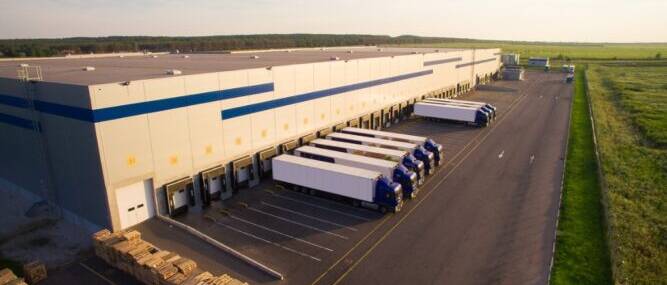What is a Customs Warehouse?
A customs warehouse, sometimes referred to as a bonded warehouse, is a site used for the storage and processing of imported goods.
Whilst goods are held in a customs warehouse, they are not liable for customs duties and, as such, can result in significant savings. Goods imported into a customs warehouse and subsequently exported, will negate the imported customs duty entirely. If goods are released to the UK market, duty is only collected when the goods leave customs control from the warehouse to free circulation.
The two main advantages of using a customs warehouse are cost reduction and improvement in cash flow.
Reducing costs within the supply chain
Customs warehousing negates the need to pay customs duty on goods imported, stored and subsequently exported from the UK. If you keep goods within your customs warehouse and do not release them to free circulation (in the UK), you do not have to pay the customs duty on the import. This can mitigate the “Double Duty” effect of trading in multiple jurisdictions. Read more on Double Duty here.
Improving Cash Flow
Customs duty is only payable once goods leave customs control. If your goods are imported in the customs warehouse and then sold in the UK, goods will need to be released to “Free Circulation”. Customs duty is only payable at the point goods are released, meaning there is a significant cashflow advantage from delaying this duty payment. This is especially beneficial if a business hold goods for a long time.
Is this right for my Business?

Every business has a unique supply chain and, as such, there is no way to know if a customs warehouse is right for you without first understanding the benefits. A customs warehouse authorisation is granted by HMRC and will increase your ongoing customs obligations. The savings need to be significant enough to outweigh both the cost of the implementation and the added administrative burden.
Barbourne Brook recommends first performing a full review of your customs landscape before committing to the much larger and more complex project of customs warehouse implementation.
The advantages of this approach are:
Assessing a customs warehouse against other customs planning techniques.
We often find that other options will get the same results without the added compliance obligations. By taking a step back, and taking a more holistic view, we can recommend the best solution that meets your specific needs.
Providing a viability assessment and gap analysis for a customs warehouse.
This will ensure that the project is viable and what work needs to be done in order to achieve it.
Give an accurate return on investment, allowing you to make a better informed commercial decision.
This point is key as savings can sometimes differ vastly from expectations once we get into the detail.
As HMRC sign-off the authorisation, it is prudent to ensure your compliance obligations are being met before you are audited.
Reviewing this at the front end allows time to resolve issues before approaching HMRC and, therefore, ensure you are in a good place when making the application.
Our Customs Landscape project covers all of the above and is the best place to start if you are considering a customs warehouse.
What Does an Application Look Like?
Implementing a Customs Warehouse is a complex and time consuming undertaking. The savings need to be significant enough to outweigh both the cost of the implementation and the added administrative burden.
The Barbourne Brook Approach
It is important to stress how large this project can be, especially if your business has no prior experience setting up and running a customs warehouse. How much help you will need changes depending on how much you wish to outsource and how much you want to do in-house. We offer services ranging from advisory/supportive to project management and turn key solutions.
All options start with an initial review, viability assessment and gap analysis. This approach will:
1) Ensure the system is the best option for your business. There are multiple customs planning techniques that sometimes deliver the same result for a lower cost of implementation and investment of time.
2) Perform a viability assessment to confirm that customs warehouse authorisation is a viable solution for your business. The assessment will also give an approximate return on investment so you are clear from the outset.
3) A gap analysis showing where the development areas are and what is involved in the next stage.

Why Choose Barbourne Brook
At Barbourne Brook we have a plethora of experience implementing customs warehousing and have aided numerous clients in attaining customs warehousing through our application services. We ensure that by working with us, you avoid any common mistakes during the process helping to speed up the general verification process while also avoiding any surprise charges, while also mitigating any disruption to you or your business during the implementation process.
Our wealth of experience and deep knowledge of customs regulations and best practices ensure you end up with the best solution for your business that maximises savings and minimises the risk of incurring surprise fees or charges.

Find Out More About the Benefits of Customs Warehousing
For a free one hour consultation, fill out our form below and our Head of Commercial, Adam Wood, will be in touch with you.
Contact Us
How can we help?
We are on-hand to help with all of your customs need. Provide us with some details on your circumstances and one of our friendly experts will be in touch to provide support and advice.